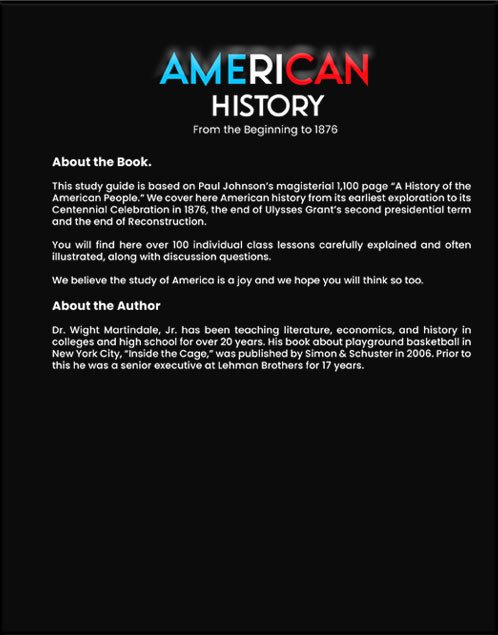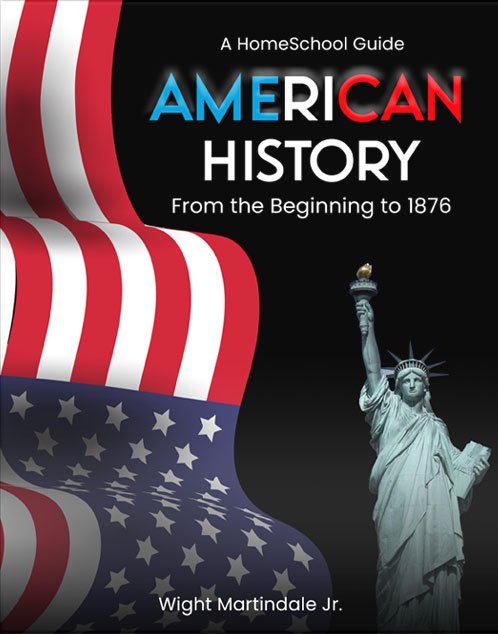About the
Book
A Home School Guide to American History
Finding a comprehensive, easy-to-work-with American History textbook is no longer a simple matter. This book, covering our history from the earliest explorations to 1876, has been written to supply that need. Its lessons are short but well told, ideal for both home school and traditional students.
The authoritative history book upon which it is built is Paul Johnson’s magisterial 1,088 page A History of the American People, brilliant but far too long for most pre-college programs. Johnson wrote nearly 70 books, but he singled this one out as a special ”labor of love.” Page references are also provided to a supplementary college textbook, America, A Narrative History, by David Shi and George Tindall.
In adapting Johnson’s book, Wight Martindale offers a bold departure from the committee-written, conventional texts most students must deal with. We strive to make easily accessible perhaps the greatest of all human adventures, the creation of the United States of America. No other national story holds such tremendous lessons, for the American people themselves and for the rest of humanity.
This study boldly asks the hard question: having achieved so much in the full blaze of recorded history, can America’s ideals and altruism–the desire to build the perfect community–be mixed successfully with aquitiveness and ambition, without which no dynamic society can be built at all? This is, and always will be, America’s greatest challenge.
For home schoolers the book offers over 100 brief lessons with carefully designed reading assignments, important historical background, discussion questions, maps, illustrations, periodic reviews and test questions. All this is designed to bring together the parent or mentor with the student in a supportive, one-on-one relationship.
Because the lessons are brief and clearly-written, they could work well in a more traditional school or a Charter School.
General Readers have also reported that they enjoyed and learned a great deal from the book–its range and brevity fit today’s busy life-styles. Beginning teachers will benefit from the lessons as well as from the helpful supplementary readings, which are provided with each lesson. This should make them better teachers.
A final word about how we teach. The conventional approach today is what can be called ex post, in which the past event is immediately drawn into the present, what followed it. Thus, the teacher would take from a study of Franklin Roosevlt’s New Deal of the 1930s, a discussion of today’s welfare state, various federal programs or recent supreme court decisions.
But the best historians don’t work that way. They are ex ante scholars, who look at what came before the event and try to understand why people acted the way they did. Thus, in the example of FDR above, they would look at Herbert Hoover’s presidency, the kind of a man Roosevelt was, and try to understand why he did what he did, why he was successful, where did he fail, how did it all happen?
Students learn more by putting themselves into the past than by dragging historical figures into the present.
American history should be fun. It was for the author: hopefully it will be fun for you too.


